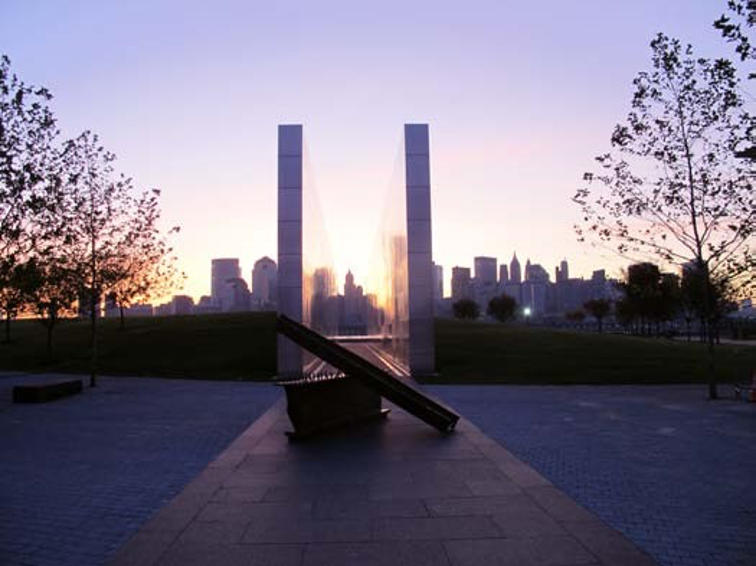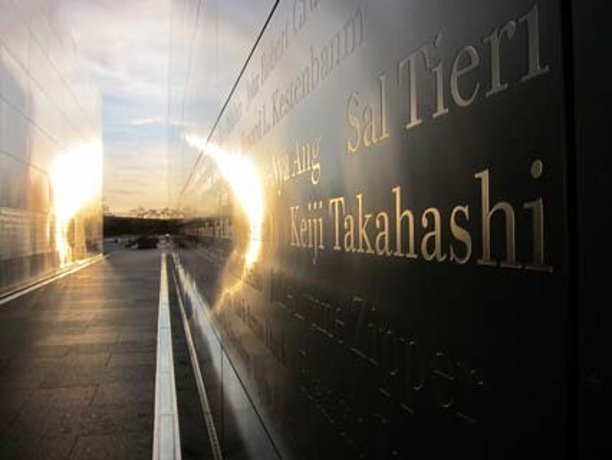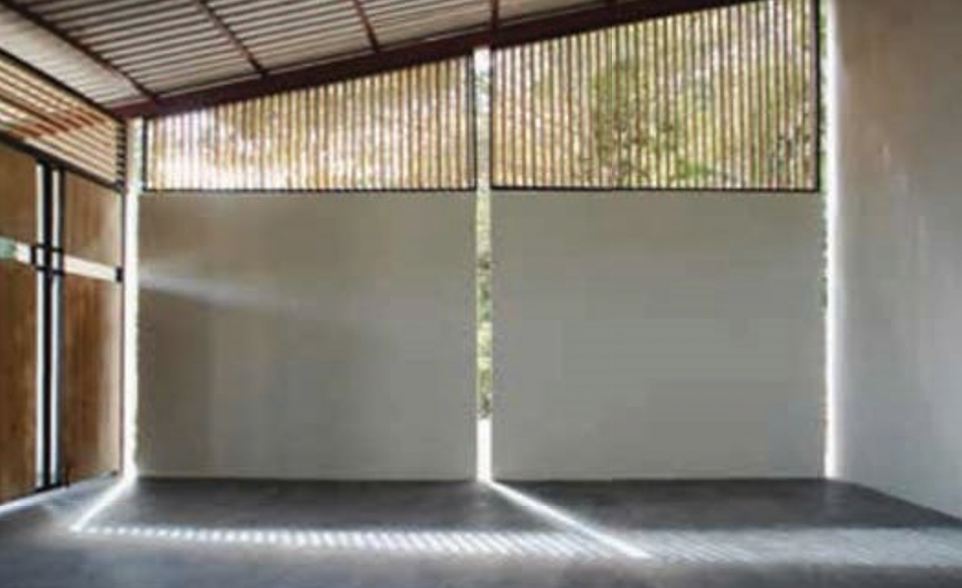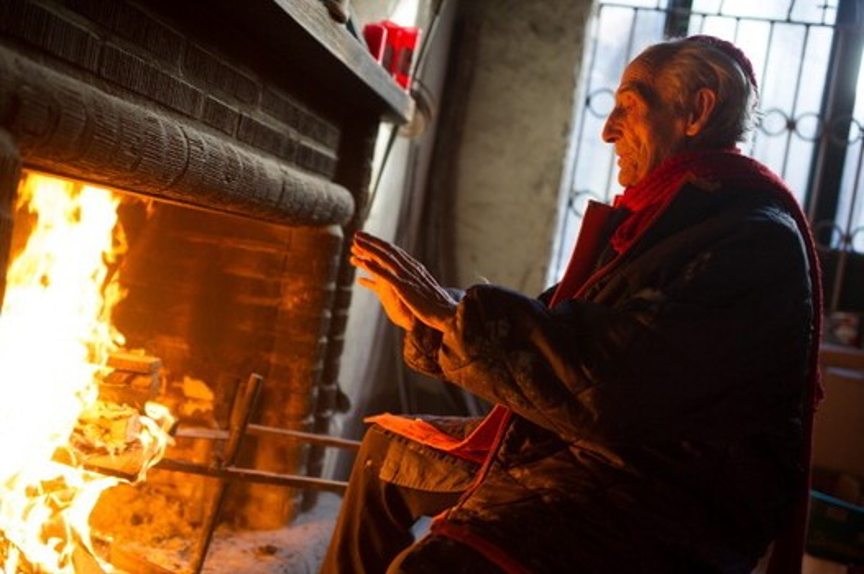Suzanne Bott
University of Arizona
suzannebott@email.arizona.edu
Michael J. Crosbie
University of Hartford
Crosbie@hartford.edu
Introduction
This paper focuses on how a sacred “spirit of place” is defined and developed within locations that are otherwise common or quotidian in nature. Specifically, the authors investigate the means by which the addition of sacred qualities in certain locations can imbue such sites with a unique and sacred “spirit of place” that sets them apart from other seemingly similar locations. These places are settings where an event, action, or element of design, ranging from the mundane to the divine, has transformed an ordinary setting into one of exceptional significance.
Sacred Spirit of Place
A creative and sensitive architectural design, a sublime element or feature of nature, or a powerful or monumental event meaningful to one or many, becomes one of the elemental measures of “spirit of place” when tied to a certain spot. It is, in fact, one way that cultures have long-differentiated the sacred from the pedestrian.
For example, in his essay, “Sacred Architecture and Symbolism,” Mircea Eliade observes that places are often identified as sacred because of the presence of features of the natural world—a tree, a mountain, or a spring–that connects that spot on the earth with the heavens. This axis mundi provides a direct passage from the earthly plane to a sacred realm. However, Eliade also describes a sense of the sacred as the result of an occurrence, by divinity or by man, which sanctifies an “everyday” place in our midst. In the essay, Eliade describes how a wild animal might be hunted for days, and when it is finally apprehended, is sacrificed on the spot. Where the animal is caught and overpowered, a sanctuary might be built, and that place is then sanctified (Eliade, 108). The event creates a connection for others to that place, creating a “spirit of place,” in an otherwise ordinary place, and this “spirit of place” contributes to a new sense of sacredness, meaning, and value.
Scholars have long understood “original wondering about environment” and the distinctive relationship “which binds man to the earth” (Dardel, in Relph, 1985, 21), along with the role of elemental features of nature in elevating the spirit and creating wonder and “marveling” (Heidegger, in Relph, 1985, 16). Human acts of willful destruction, war, and violence, as well as inexplicable accidents of folly, also contribute to sacred meaning in the world (Stanley-Price, 2001). As theory evolves, perceptions that result from the experience of being in place and the accordant elements are being validated through evidence-based design research (Sternberg, 2009).
Early work captured the essence of soulfulness in combining design with place that creates a literacy of landscape that offers an interpretation of meaning. Geographer Yi-Fu Tuan (1974) noted the presence of “Topophilia” or the emotional connections that exist between the physical environment and human beings, and identified a form of reverence called Geopiety (1993). He discusses the wholeness that is experienced in religion and place through safety, certainty, and spiritual elevation, provided by aesthetics, cultural practices, and (eventually) universalism (2010). Relph explored the essence of place from a phenomenological perspective in his seminal work, “Place and Placelessness” (1976). He noted that spiritual values of a place indicated a need for meaning in the environment (1996:920).
Alexander et al. (1977) noted the basics of place are found in patterns within built and natural environments, patterns that build upon one another, creating legibility and meaning, “a literacy of feeling that creates a poem, something built to contain mystery, an access to the heart” (Hamilton, 69). Norberg-Schulz (1979) noted that genius loci, the “spirit of place,” is the very essence of understanding the relationship of humans in the environment. He describes human identity as the ability to find identification within the world based upon the character of a place.
Case Studies
We present several designed environments that we believe magnify a sacred “spirit of place” in previously quotidian locations. These case studies represent a range of scales: national, community, and individual, and include “sacred secular” structures that demonstrate how human design interventions support and enhance a sacred “spirit of place” at different levels. All three consider the primary role of light in elevating the sacred presence.
At the national scale, the “Empty Sky” 9/11 Memorial in Liberty State Park, Jersey City, New Jersey is directly across the Hudson River from lower Manhattan. It was in this existing public park on the morning of September 11, 2001, that people gathered to watch the unfolding tragedy at the Twin Towers across the river. It also became a place where loved ones searched for each other and waited for answers after the event; they left notes, flowers, and objects memorializing those who had perished. While this location is not the very site of the cataclysmic event, it is inextricably bound to it in space, time, and memory. Its “everydayness” was forever transformed by the historic event.
Jessica Jamroz and Frederick Schwartz designed “Empty Sky” to frame an axial view of the
World Trade Center site with two walls. Each wall is the length of one side of the base of the Twin Towers: 208 feet, 10 inches. They are 30 feet tall, 30 inches thick, and parallel to each other, separated by 10 feet, creating a veritable roofless “chamber.” Approached from the west, the two walls are first read as an abstract iconography of the Twin Towers (Figure 1). The design intent was to “replace” the towers on the skyline in response to the emptiness created by the attacks— both the physical emptiness of the skyline, and the spiritual and emotional emptiness of human loss, which Jamroz describes as a “gaping hole in the heart” (Interview, Jamroz).
“Empty Sky” is about memory, recalling not only the vanished physical presence of the towers but also the people, through the inclusion of the names of 746 New Jerseyans killed in the attacks. The names are acid-etched into the brushed, marine-grade stainless steel surface, in a band 4 feet high, which runs the length of the walls 2 feet, 6 inches above grade. The visitor sees her reflection in the walls and in the names, forging a connection (or reconnection) between the contemporary observer and the lost souls. This communion of beings across time and space is what gives the memorial its ability to “console” and “inspire hope” (Interview, Jamroz).
What was not foreseen in the design is the mystical transformation of the roofless chamber at certain times of day, depending on weather conditions. This “halo” (an ethereal portal) is created by the reflection of sunlight low in the sky between the two walls. Because the halo moves as one walks between the walls, the visitor cannot actually apprehend this spiritual presence (Figure 2).
As one walks toward it, the halo recedes, moving at the same pace. Jamroz describes the memorial as a “receptor,” a humanly constructed environment that allows memory, reflection, solace, healing, spirituality, and perhaps a hallowed presence to be experienced—all of which enhance the sacred spirit of place (Interview, Jamroz).
The second case study is at the community scale. “Proyecto Clamor de Paz” in the town of Guaimaca, Honduras, was designed by architect Paul Lukez. The memorial is built on the spot where in 2008 two children, a brother and sister, were murdered in their house by robbers (“Proyecto,” p. 21). Lukez became involved in the project through his congregation, which provides support to a church in the small community of 13,000. On a visit to Guaimaca, he visited the house where the murder took place. The act outraged the community, and part of its healing process was to transform the simple house—one like many others in town—into a memorial to the children. Lukez began to sketch out an idea for a more permanent memorial, as the house was disintegrating (Interview, Lukez).
The existing house was taken down and the memorial was built on the foundation footprint, reached up a steep dirt road and across a bridge over a narrow stream. The designer notes that the bridge provides a spatial transition from the secular to the sacred space of the Proyecto. The location is charged with memory and sorrow, and the new building intervenes as gently as possible. Lukez studied the local vernacular architecture and building techniques, which help define Guaimaca’s sense of place, paying careful attention to the way natural light is captured, filtered, and displayed in humble domestic structures (Interview, Lukez).
Sunlight is the stitching that weaves this memorial to the place. The primary interior space is conceived as a single chamber in which the children are personified by light (Figure 3). On the surface of the simple dark gray concrete floor, two gold medallions, each engraved with the victim’s name, are positioned across from each other. The surrounding walls are designed with tall, slender vertical reveals that admit shafts of sunlight. At a certain time each afternoon (weather permitting), a beam of sunlight aligns with the metal disks. The children are once again illuminated, and bound to this sacred place of memory and healing (Interview, Lukez).
At the scale of the individual, houses designed on the principles of “A Pattern Language” locate the sacred “spirit of place” in the presence of the hearth, alive with flame, like a soul within the body (Alexander, et al, 843-848). Light and fire were purposeful design features to add security and warmth, and by bringing together others, they formed community around cooking, stories and music, rituals, and safety (Figure 4). Fire remains a central theme in bringing people together. Even if the possibility of a hearth is not available, the presence of a flame can soften a setting and provide security, comfort, beauty, and “a natural locus for talk and dreams and thoughts” (Ibid, 842). Architects such as Alexander recognized this and formalized these principles into a poetic language of patterns that when combined, result in physical as well as spiritual illumination and a profoundness of space (. A fireplace in the home is important, especially so in communal living spaces, for sharing the sacred energy of fire and the spirit. “There is no substitute for fire” (Ibid, 843).
Conclusion
There is a clear and direct understanding that the presence of a sacred “spirit of place” in otherwise everyday environments may be enhanced through intentional design. The existence of the sacred “spirit of place” in a setting becomes an extraordinary bridge that moves the human psyche and spirit from the quotidian to the sacred, and transforms the experience. The degree to which architects, planners, and designers can foster and promote the sacred elements within a setting through conscious design, interpretation, and genuine respect can influence and elevate the experience from the mundane to the divine.
References
Alexander, Christopher, S. Ishikana, M. Silverstein, M. Jacobsen, I. Fiksdahl-King, and S. Angel. A Pattern Language, New York: Oxford University Press, 1977.
Bott, Suzanne, and Banning, James, “The Use of Psychometric Scales to Measure Spirit of Place,” Proceedings, ICOMOS General Assembly, 2008.
Eliade, Mircea, “Sacred Architecture and Symbolism,” in Symbolism, the Sacred, and the Arts, edited by Diane Apostolos-Cappadona, New York: Crossroad, 1986.
“Empty Sky,” Faith & Form, Vol. 45, No. 4 (2012), p. 29.
Hamilton, William L., “The Spirit of Home,” in Metropolitan Home, December 1998, Vol.20, No. 12, 69-77.
Harries, Karsten, “Untimely Meditations on the Need for Sacred Architecture,” in Constructing the Ineffable: Contemporary Sacred Architecture, edited by Karla Cavarra Britton, New Haven: Yale University Press, 2010.
Hester, R. “Sacred Structures and Everyday Life,” in Dwelling, Seeing, and Designing, edited by David Seamon, Albany: State University of New York Press, 1993.
— “Subconscious Places of the Heart, Places, Vol. 2, No. 3, (1995), pp. 10-22.
Interview, Jessica Jamroz, April 16, 2015.
Interview, Paul Lukez, April 14, 2015.
Norberg-Schulz, C., Genius Loci, New York: Rizzoli International Publishers, 1979.
“Proyecto Clamor de Paz,” Faith & Form, Vol. 47, No. 4 (2014), p. 21.
Relph, Edward, Place and Placelessness, London: Pion Ltd, 1976.
—–, “Geographical Experiences and being-in-the-world: The phenomenological origins of geography,” in Dwelling, Place, and Environment: towards a phenomenology of person and world, Eds. D.
Seamon and R. Mugerauer, New York: Columbia University Press, 1985, pp. 15-31.
—–, “Place,” Companion Encyclopedia of Geography, Eds. I Douglas, R. Huggett, C. Perkins, 2nd Edition, New York: Routledge, 1996, pp. 906-922.
Sarbin, T.R. “Place Identity as a Component of Self,” in Journal of Environmental Psychology, No. 3 (1983), pp. 337-342.
Stanley-Price, Nicholas, Cultural Heritage in Postwar Recovery, Papers from the ICCROM Forum, 2005. Rome: ICCROM, 2007.
Steele, Fritz, The Sense of Place, Boston: CBI Publishing, 1981.
Sternberg, Esther, Healing Spaces, The Science of Place and Well Being, Cambridge, MA: Harvard University Press, 2009.
Tuan, Yi Fu, Topophilia: A Study of Environmental Perception, Attitudes, and Values, New York: Columbia University Press, 1972.
—–, Passing Strange and Wonderful, Washington D.C.: Island Press, 1993.
—–, Space and Place: The Perspective of Experience, Minneapolis: University of Minnesota Press, 2001.

Figure. 1: “Empty Sky,” axial frame of World Trade Center site. (Jessica Jamroz and Esto Photographics)

Figure. 2: “Empty Sky,” inscribed names and “halo.” (Jessica Jamroz and Esto Photographics)

Figure. 3: Proyecto Clamor de Paz, memorial space. (Paul Lukez Architecture)

Figure. 4: A hearth alive with flame is “a natural locus for talk and dreams and thoughts.”



